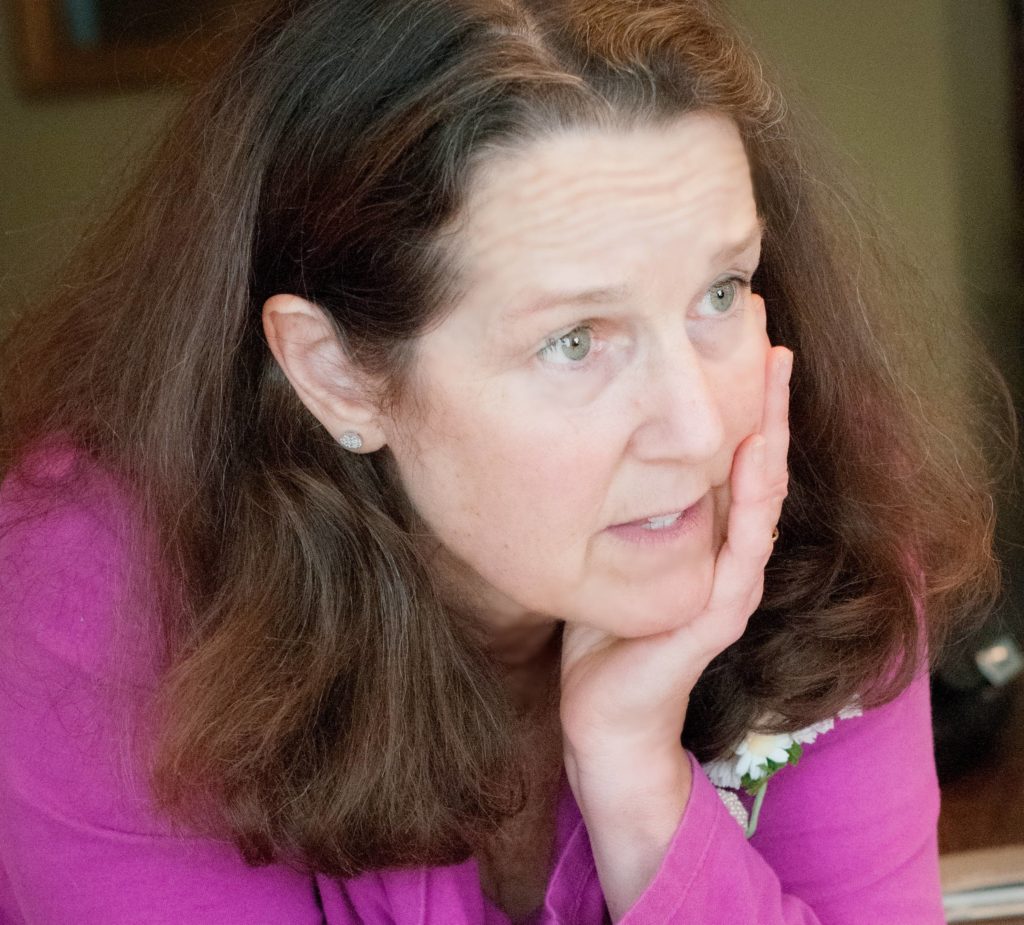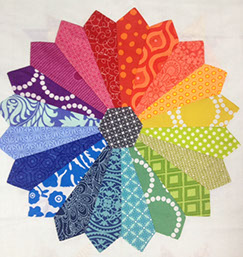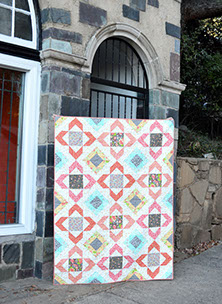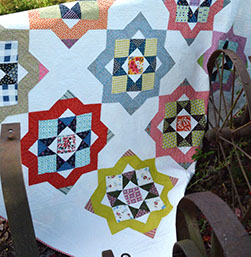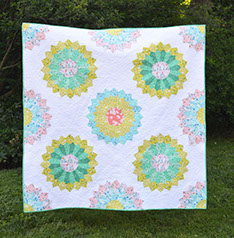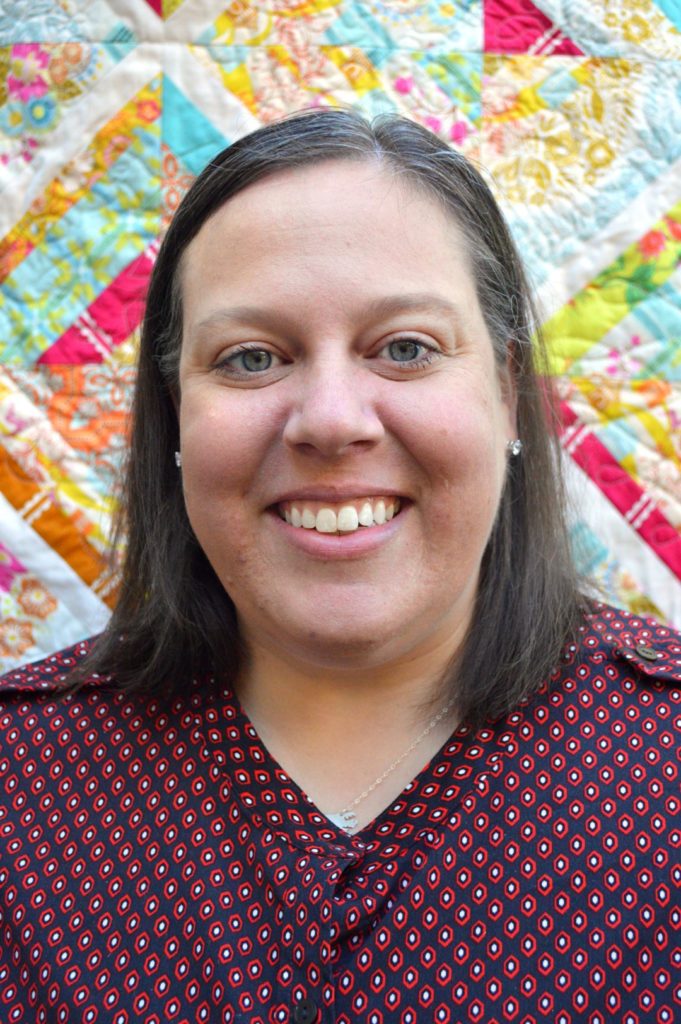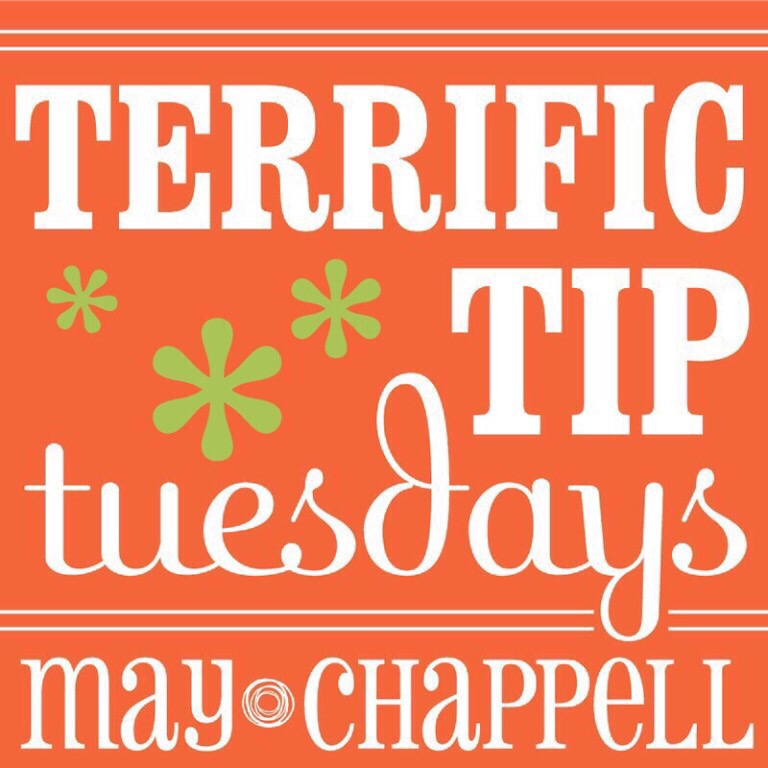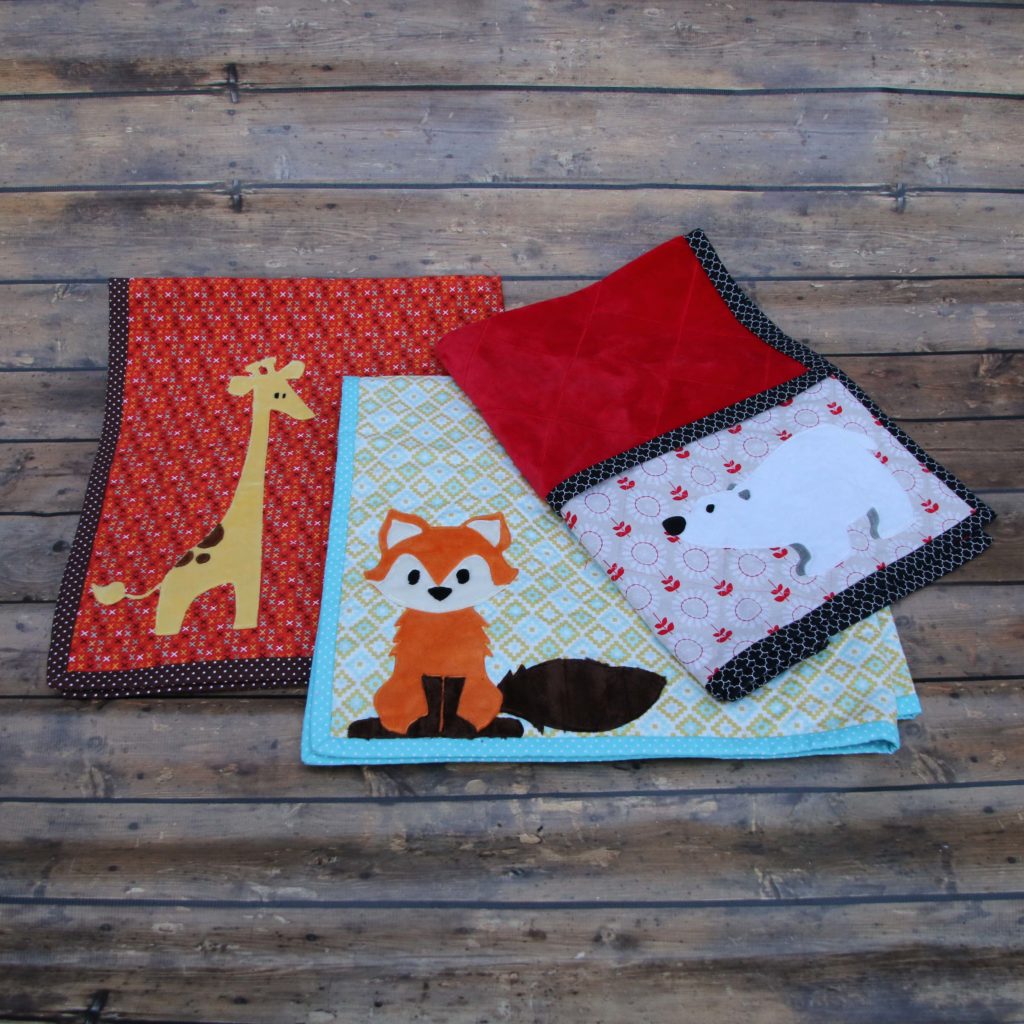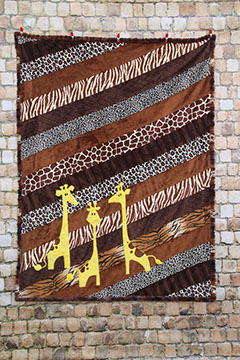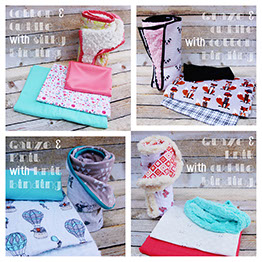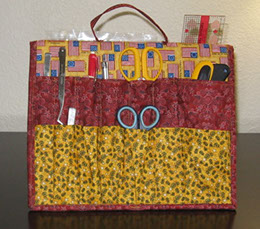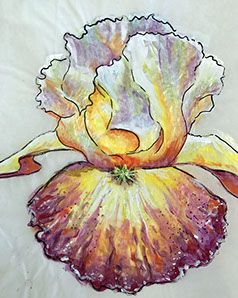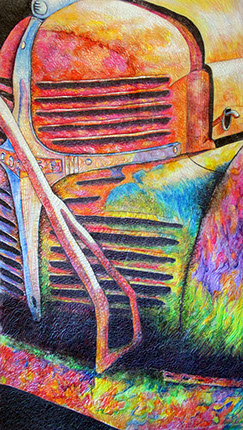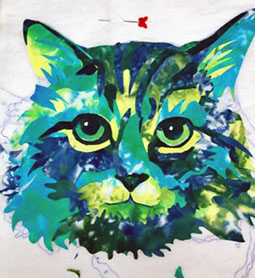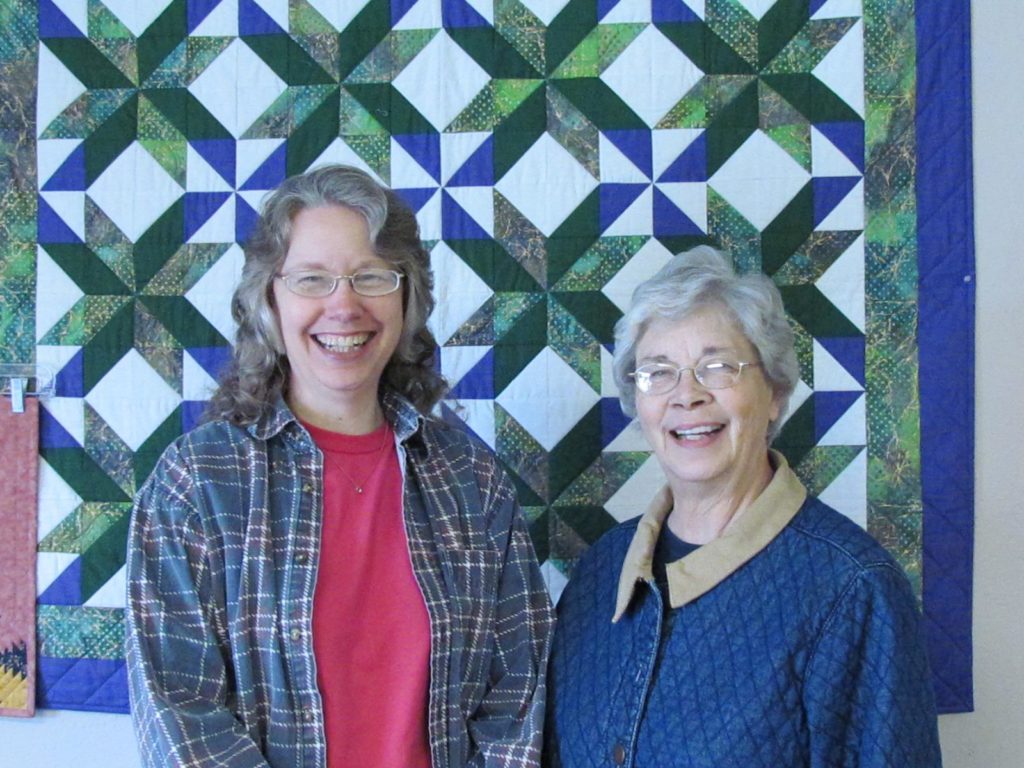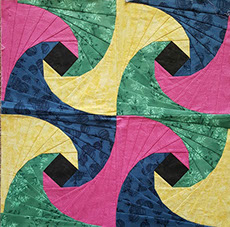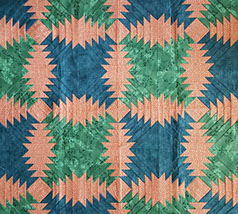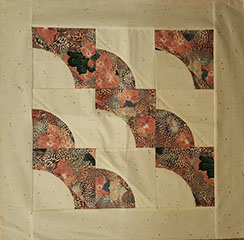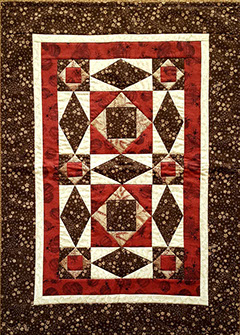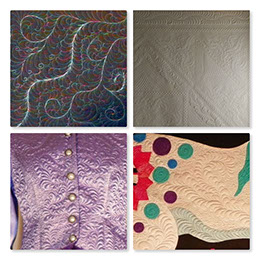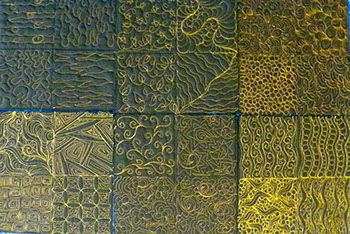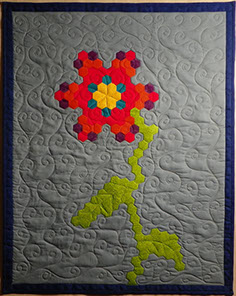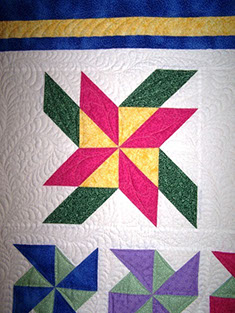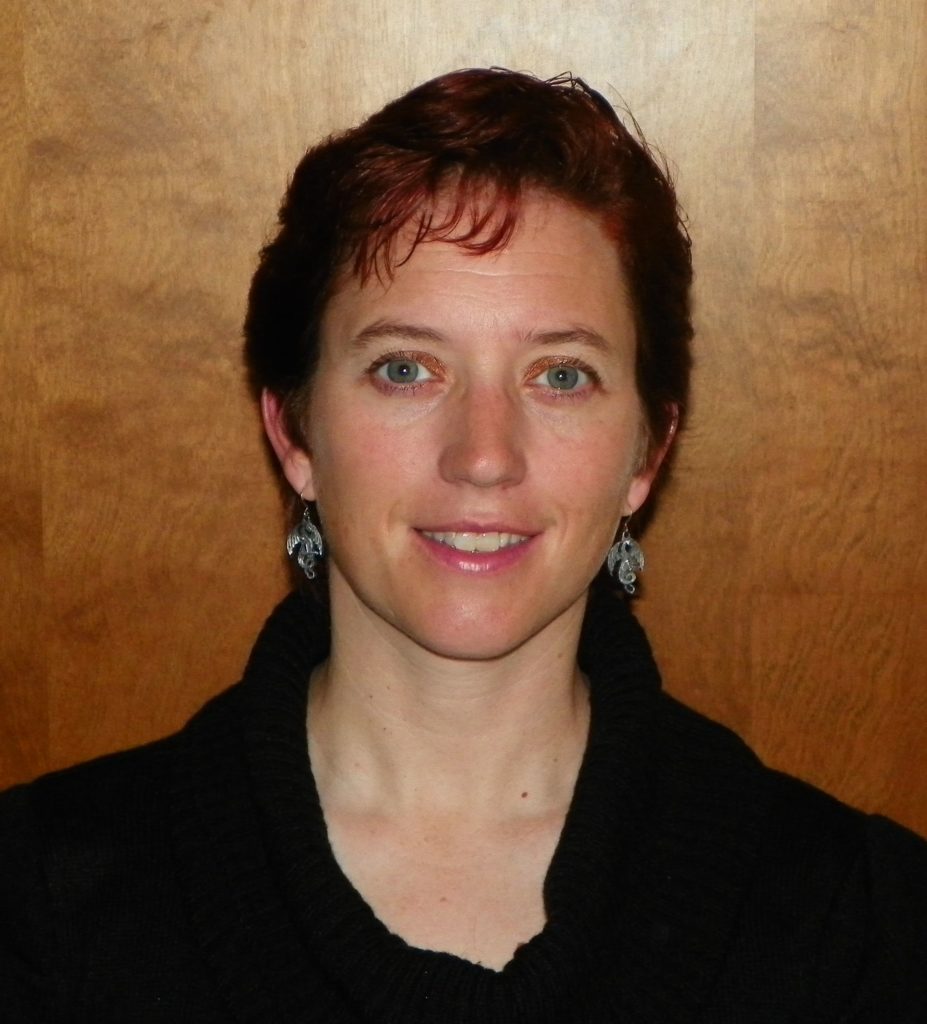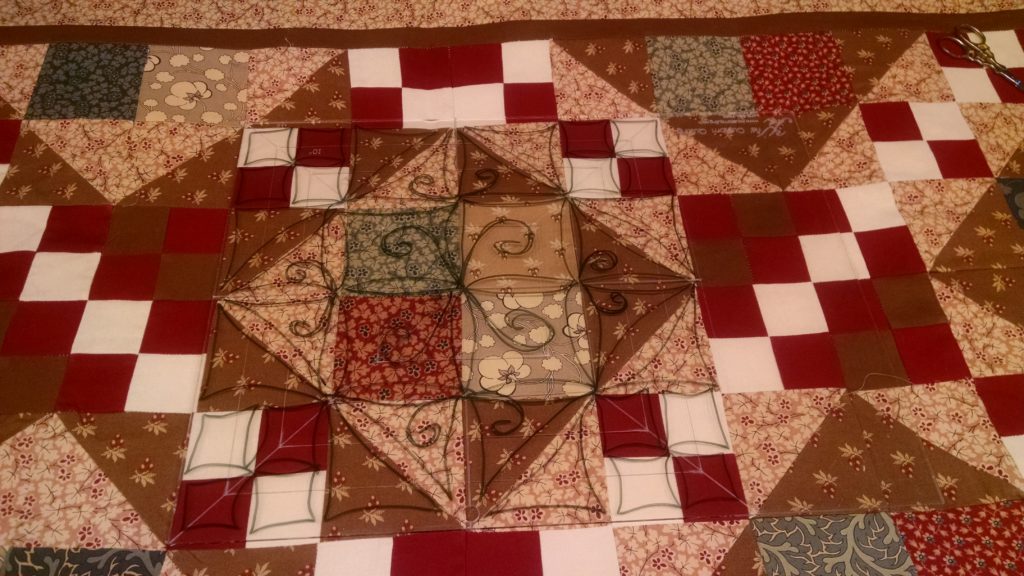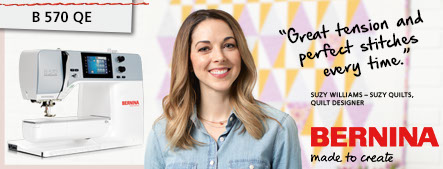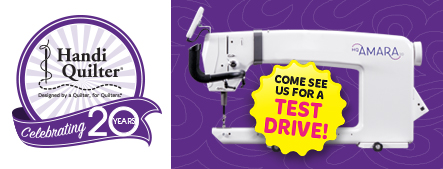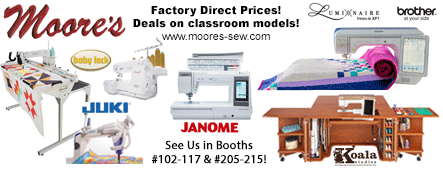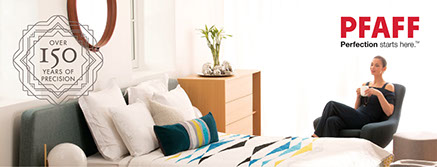Monday: 1016C Fun with Free-motion Swirls 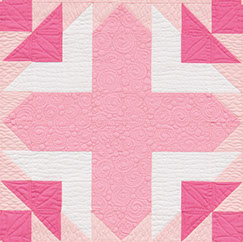
Tuesday: 2016C Free-Motion: Designs with Lines 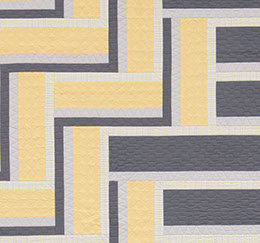
Wednesday: 3015C Free Motion Improv 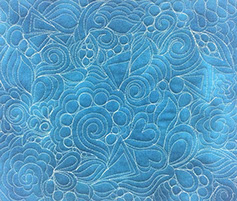
Thursday: 4015C Modern Free Motion Fillers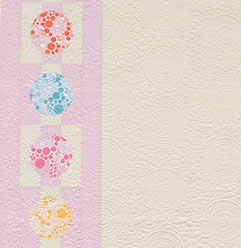
Machines provided for Christa’s classes are the Handi Quilter Sweet 16, a sit-down longarm machine. The machine stays stationary while students learn to move their fabric. Skills taught in this class can be used on any domestic or sit down longarm machine where the quilter is moving the fabric through the machine.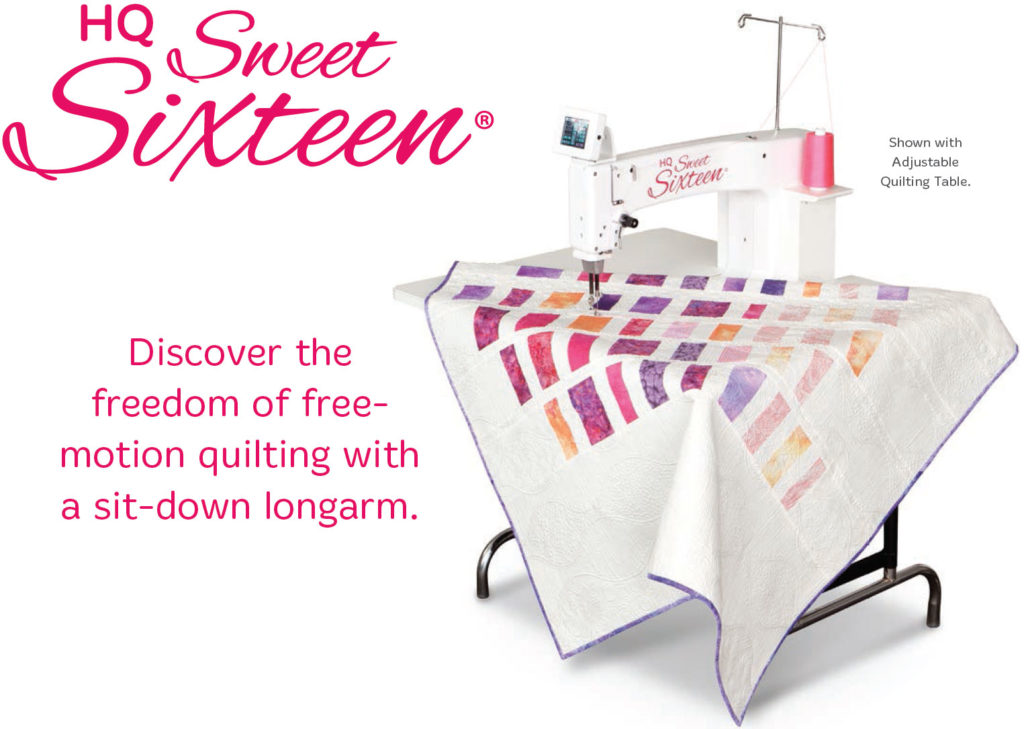
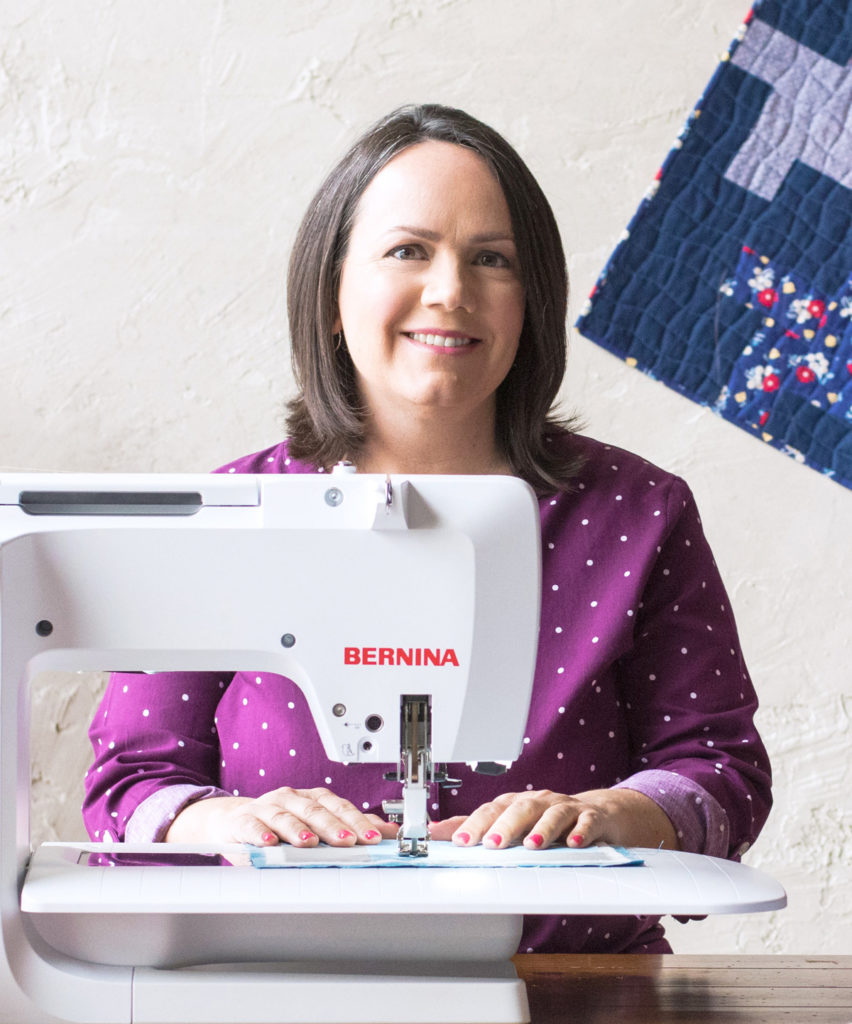 Christa’s mother had always been a great seamstress but never made quilts. She tried to get Christa interested in sewing clothing, bags and other “3-D” items when she was younger but Christa just wasn’t interested. Once Christa took up quilting, her mom was her very first student and has been enjoying it ever since. Christa loves that quilting gives her and her mom something to do together.
Christa really likes utilizing modern, geometric designs in her quilts. She is always on the lookout for interesting shapes found in nature and architecture, taking pictures and thinking about how what she is seeing would make a great quilt design.
Before Christa started teaching nationally, the first class that she ever took at a quilt show was at Road to California!! It was a thread painting class from Road award winning quilter, Nancy Prince. The class was taken during the time when Christa was trying to figure out what her “niche” was (hint – it’s machine quilting). Although Christa didn’t stick with thread painting, she still felt “it was the best class because I was able to observe what makes a good, successful teacher: someone who knows their subject, cares about their students, present their material in a fun and engaging way, and has so much passion for their work that it’s obvious with every stitch they take.” Christa hopes her students at Road 2018 will “walk away with the belief, that yes, it’s possible to quilt their own quilts and have a great time doing it!”
What does Christa like most about teaching? “Hands down, I love interacting with my students. I love that spark of excitement I see on their faces when they understand a concept I’m teaching. Their whole face lights up and they become much more relaxed and less nervous. I love being in a room full of enthusiastic, engaged students who are eager to learn.”
When asked what her best quilting tip was, of course it had to do with free motion quilting: “When you want to learn a free-motion quilting design, practice quilting the design on a small practice square (about 10” x10”) every day for a week. After a few days, you’ll start to see a noticeable improvement.”
Christa shared with Road a touching experience that she once had while teaching: “I had a student once who was grieving the loss of a loved one. She told me that she hadn’t planned on coming to class but her family insisted she get out and do something to distract herself. She said she was so glad she came, because it really was therapeutic for her to stitch out her emotions in cloth. She said the friendship and camaraderie of the other students was just what she needed at that point it time. It was hard for me to hold back my own tears as she told me this, and I’m really glad I could be there for her that day.”
Road is proud to welcome Christa Watson to their teaching staff for 2018.
To learn more about Christa, please visit her website.
]]>
Christa’s mother had always been a great seamstress but never made quilts. She tried to get Christa interested in sewing clothing, bags and other “3-D” items when she was younger but Christa just wasn’t interested. Once Christa took up quilting, her mom was her very first student and has been enjoying it ever since. Christa loves that quilting gives her and her mom something to do together.
Christa really likes utilizing modern, geometric designs in her quilts. She is always on the lookout for interesting shapes found in nature and architecture, taking pictures and thinking about how what she is seeing would make a great quilt design.
Before Christa started teaching nationally, the first class that she ever took at a quilt show was at Road to California!! It was a thread painting class from Road award winning quilter, Nancy Prince. The class was taken during the time when Christa was trying to figure out what her “niche” was (hint – it’s machine quilting). Although Christa didn’t stick with thread painting, she still felt “it was the best class because I was able to observe what makes a good, successful teacher: someone who knows their subject, cares about their students, present their material in a fun and engaging way, and has so much passion for their work that it’s obvious with every stitch they take.” Christa hopes her students at Road 2018 will “walk away with the belief, that yes, it’s possible to quilt their own quilts and have a great time doing it!”
What does Christa like most about teaching? “Hands down, I love interacting with my students. I love that spark of excitement I see on their faces when they understand a concept I’m teaching. Their whole face lights up and they become much more relaxed and less nervous. I love being in a room full of enthusiastic, engaged students who are eager to learn.”
When asked what her best quilting tip was, of course it had to do with free motion quilting: “When you want to learn a free-motion quilting design, practice quilting the design on a small practice square (about 10” x10”) every day for a week. After a few days, you’ll start to see a noticeable improvement.”
Christa shared with Road a touching experience that she once had while teaching: “I had a student once who was grieving the loss of a loved one. She told me that she hadn’t planned on coming to class but her family insisted she get out and do something to distract herself. She said she was so glad she came, because it really was therapeutic for her to stitch out her emotions in cloth. She said the friendship and camaraderie of the other students was just what she needed at that point it time. It was hard for me to hold back my own tears as she told me this, and I’m really glad I could be there for her that day.”
Road is proud to welcome Christa Watson to their teaching staff for 2018.
To learn more about Christa, please visit her website.
]]>
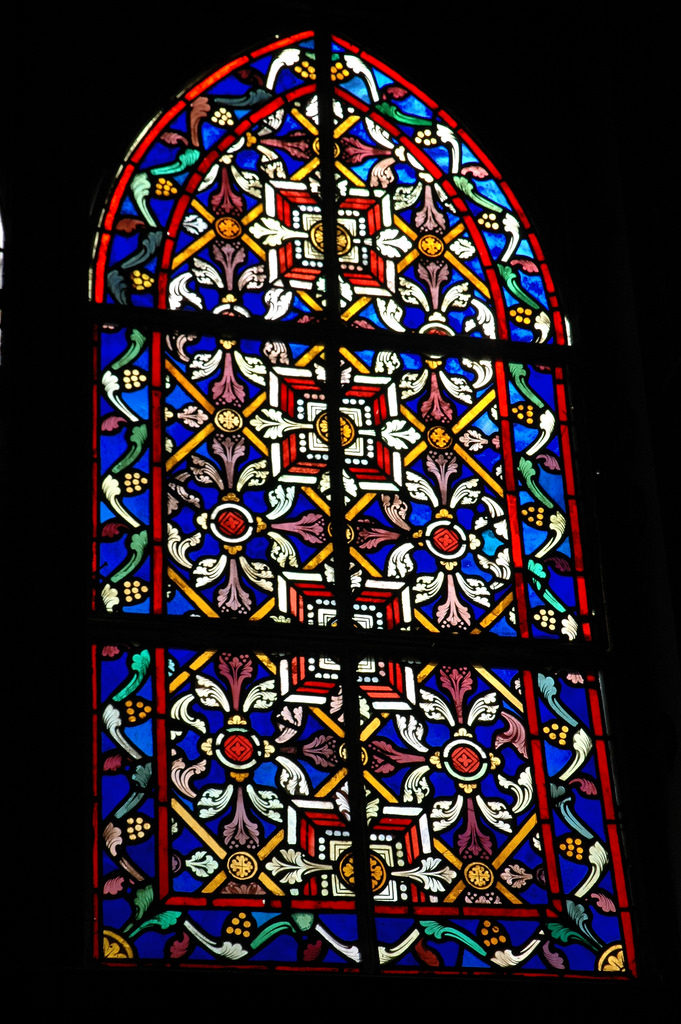 Iglesia Santa Barbara de Santa Rosalia, Designed by Gustave Eiffel,[/caption]
Just as art glass requires the artistic skill to conceive an appropriate and workable design and skills to engineer the piece, so does creating a stained glass effect with fabric. Road 2018 teacher
Iglesia Santa Barbara de Santa Rosalia, Designed by Gustave Eiffel,[/caption]
Just as art glass requires the artistic skill to conceive an appropriate and workable design and skills to engineer the piece, so does creating a stained glass effect with fabric. Road 2018 teacher 


